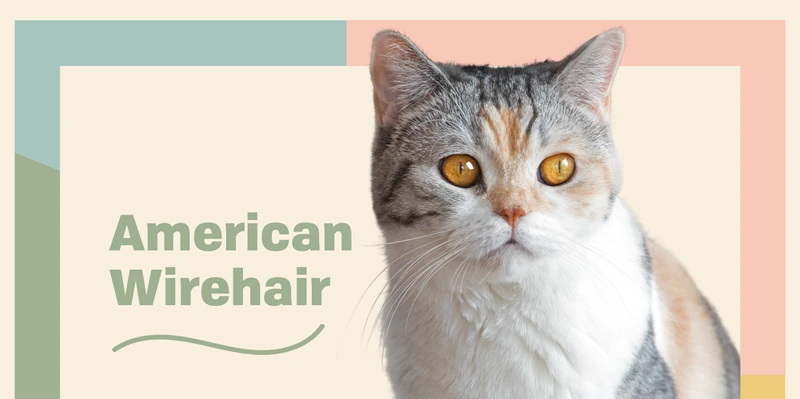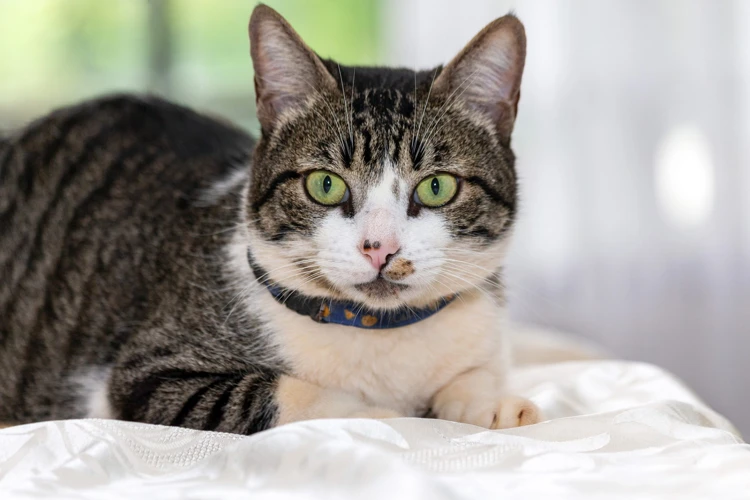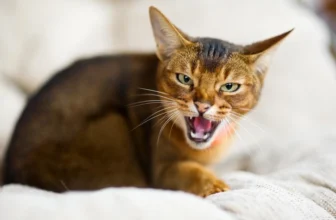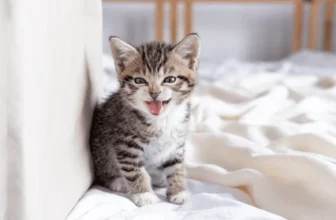As a cat owner, there’s nothing quite like having multiple furry friends to keep you company and provide endless hours of entertainment. However, when aggression arises between American Wirehair cats, this can quickly turn your household from peaceful to chaotic. As cats are territorial animals, it’s not uncommon for them to exhibit aggressive behavior towards other felines, especially when resources are limited. But don’t worry, with the right knowledge and techniques, preventing aggression between American Wirehair cats in multi-cat households is possible. In this article, we’ll discuss the causes and signs of aggression, how to create a peaceful home for multiple cats, tips for introducing new cats, and managing aggressive behavior. By the end of this article, you’ll have the tools you need to promote harmony in your furry family.
Understanding American Wirehair Cat Behavior

As a cat owner, it’s important to understand the behavior of your feline friends in order to prevent aggressive interactions between American Wirehair cats. By gaining insight into their behavior, you can learn how to create a peaceful environment and manage any conflicts that may arise. Understanding the causes of aggression, recognizing signs, and intervening early can help ensure a harmonious home for your cats. In this section, we’ll delve into American Wirehair cat behavior and explore strategies for preventing aggression in multi-cat households. Want to learn more about preventing aggression in American Wirehair cats? Check out our page on Am Wirehair territorial aggression.
What Causes Aggression in Cats?
Aggression is often a common problem in multi-cat households, and it’s crucial to understand what causes this behavior in cats to prevent it from happening. Various issues can trigger aggression in cats, including:
- Territorial Aggression: Cats are territorial animals, and they may become aggressive when they feel that their territory is being invaded. This type of aggression is common when a new cat is introduced into the household or when an outdoor cat comes inside.
- Fear Aggression: Cats may also become aggressive when they feel afraid or threatened. This may happen when they encounter unfamiliar people, animals, or objects.
- Play Aggression: Sometimes, cats play too rough, and this can escalate into aggression if they become too excited or overstimulated. This type of aggression is often seen in kittens and young cats but can also occur in older cats.
- Pain or Illness: If a cat is experiencing pain or discomfort due to an illness or injury, they may become aggressive. It’s essential to rule this out by taking your cat to the vet if you notice a sudden change in their behavior.
- Redirected Aggression: This occurs when a cat becomes agitated by something they cannot reach, such as a bird or squirrel outside, and lashes out at another cat or human in the household.
It’s important to note that some breeds, such as American Wirehair Cats, may be more prone to aggression than others. If you’re experiencing persistent aggression in your American Wirehair Cat, it’s wise to seek the advice of a professional animal behaviorist. You can also check out our article on aggression in American Wirehair Cats for more information on this subject.
Recognizing Signs of Aggression
Being able to recognize signs of aggression in American Wirehair cats is crucial in maintaining a safe and healthy environment for your feline friends. Here are some common signs to watch out for:
- Hissing and growling: These vocalizations are often used as a warning to other cats to stay away.
- Swatting and biting: Cats may attack with their paws or teeth when feeling threatened or agitated.
- Body posturing: Arched backs, raised fur, and a puffed-up tail can all be indications of an angry or anxious cat.
- Marking territory: Cats may spray or scratch to mark their spot in the house, leading to territorial aggression.
- Avoidance behavior: If one cat is constantly hiding or avoiding another, it could indicate fear or anxiety that may lead to fear aggression.
It is important to note that some of these behaviors can also be seen during playtime or roughhousing between cats. However, if the behavior seems excessive or is causing harm to one or more cats, it is important to take action and address the situation to prevent future aggressive tendencies.
The Importance of Early Intervention
Early intervention is crucial when it comes to preventing aggression between American Wirehair cats living together. Ignoring the issue can lead to the development of aggressive behavior and can be dangerous for the cats as well as humans. It is important to recognize the signs of aggression and deal with them as soon as possible.
One of the reasons why early intervention is vital is because aggressive behavior can become a habit for cats, leading to long-term problems that are difficult to solve. But if you take steps to address the behavior early on, it’s much easier to nip it in the bud.
Early intervention not only helps prevent aggression, but it also helps to maintain a peaceful home. Intervening early can reduce tension between your cats, decrease the likelihood of fighting, and establish a harmonious environment in your home.
Providing separate resources, scheduling playtime, and setting up separate sleeping areas are some of the ways you can prevent aggression and intervene early. By providing enough resources such as litter boxes, toys and resting areas, your cats will be less likely to compete for scarce resources.
Additionally, scheduling playtime and interactive activities is essential to reduce boredom and stress. This can be beneficial for a cat’s physical and emotional wellbeing too. Playtime and interactive activities help to reduce aggression and help to create a positive environment at home. Learn more about this in our article on playtime bond.
Training techniques can also be an effective way to intervene early and prevent aggression. This includes using positive reinforcement to reward good behavior and redirecting your cats’ attention away from negative behaviors. You can read more about this in our article on training techniques for aggressive American Wirehair Cats.
Intervening early when dealing with aggression between cats can help prevent long-term problems and maintain a peaceful home. Providing enough resources, scheduling playtime, and training are some of the methods that can help address aggression & promote good behavior.
Creating a Peaceful Home

As a pet parent of American Wirehair cats, you want to create a tranquil and stress-free home environment for your furry friends. A peaceful atmosphere can go a long way in preventing aggression between cats and promoting their overall well-being. In this section, we will explore some practical ways you can enhance your cat’s living space using positive reinforcement, providing enough resources, and scheduling playtime and interactive activities. By implementing these strategies, you can reduce the chances of your cats experiencing unnecessary stress or confrontations.
Providing Enough Resources
Cats are territorial animals, and in multi-cat households, it’s essential to ensure that each cat has enough resources to prevent aggression. Providing enough resources is important as it reduces the competition for resources and helps establish a harmonious environment between cats. Here are some tips to ensure that each cat has enough resources:
- Food and water bowls: It’s important to have multiple food and water bowls throughout the house to avoid competition between cats. The rule of thumb is to have one more bowl than the number of cats in the house. Place the bowls in different locations to give each cat space to eat and drink in peace.
- Litter boxes: Have enough litter boxes for each cat in the house plus one more as an extra. For example, if you have three cats, you should have four litter boxes. Put the litter boxes in quiet and accessible locations, and make sure to clean them regularly.
- Scratching posts: American Wirehair cats have a natural tendency to scratch, and providing scratching posts can help reduce aggression. Have at least one per cat, and place them in different locations of the house.
- Hideaway spaces: American Wirehair cats like to have their own space, providing hideaway spaces such as cat trees, boxes, or shelves can reduce competition between cats. Place them in different locations to give each cat space to retreat when they need it.
- Toys: Playing is a great activity for cats to reduce stress and aggression. Provide a variety of cat toys such as balls, wand toys, or puzzle toys. Rotate the toys regularly to keep them interested.
By providing enough resources, each American Wirehair cat in the household has their own space, and competition for resources is significantly reduced. This creates a peaceful environment that reduces aggression among cats.
Setting Up Separate Sleeping Areas
When it comes to preventing aggression between American Wirehair cats in multi-cat households, providing separate sleeping areas is crucial. Cats are territorial creatures and having to share a sleeping space can cause stress and lead to aggressive behavior. Here are some tips for setting up separate sleeping areas for your cats:
| Tip | Description |
|---|---|
| 1. Provide multiple sleeping options | Make sure each cat has a designated area to sleep in, such as a cat bed or designated spot on a piece of furniture. Providing multiple sleeping options will allow your cats to choose their own sleeping spot, which can reduce competition and aggression. |
| 2. Avoid placing sleeping areas in high traffic areas | Try to place the sleeping areas in quiet, low-traffic areas of your home. This will allow your cats to sleep more peacefully and away from noise and disruptions that can trigger aggressive behavior. |
| 3. Provide comfortable bedding | Make sure each sleeping area has comfortable bedding that is cleaned regularly. Cats love soft, cozy places to sleep, and providing comfortable bedding can help reduce stress and anxiety and promote peaceful sleeping habits. |
| 4. Use pheromone diffusers | Consider using pheromone diffusers in the sleeping areas to help reduce stress and promote relaxation. Pheromone diffusers release synthetic versions of natural cat pheromones, which can help cats feel calmer and more secure in their designated sleeping areas. |
| 5. Avoid proximity to litter boxes and food/water dishes | Avoid placing sleeping areas too close to litter boxes or food/water dishes. Cats can become territorial around these areas, and having sleeping areas nearby can lead to fighting and aggression. |
Setting up separate sleeping areas for your American Wirehair cats is an important step in preventing aggression and promoting harmony in a multi-cat household. By providing comfortable, separate sleeping options and avoiding high traffic or contested areas, you can help reduce stress and promote peaceful sleeping habits for all of your feline friends.
Scheduling Playtime and Interactive Activities
Cats can get bored easily and may exhibit aggressive behavior if they don’t get enough stimulation. Scheduling playtime and interactive activities is a great way to keep your American Wirehair cats entertained, happy and prevent aggression in multi-cat households.
Types of Playtime and Interactive Activities
| Activity | Description |
|---|---|
| Chasing Toys | Using toys that your cats can chase encourages their prey drive and gets them moving. You can use toy mice, balls, or feathers on a string. |
| Laser Pointers | A laser pointer can keep your cat entertained for hours, but it’s important to use it in moderation. Never shine it directly in your cat’s eyes |
| Interactive Toys | Interactive toys like puzzle feeders, treat dispensers, and catnip toys can keep your cat entertained while engaging their brain and natural instincts. |
Scheduling Playtime
Consistency is key when it comes to scheduling playtime. It’s important to create a routine that your American Wirehairs can rely on. Set aside a specific time each day for playtime and stick to it as closely as possible. For multi-cat households, it may be necessary to schedule individual play sessions for each cat to ensure that they each get enough attention and stimulation.
Benefits of Playtime and Interactive Activities
Playing with your American Wirehair cats has many benefits beyond preventing aggression, including:
– Strengthening the bond between you and your cat.
– Providing mental and physical stimulation.
– Encouraging your cat to be active, which can help with weight management and overall health.
– Reducing stress and anxiety.
By scheduling playtime and interactive activities, you can provide your American Wirehair cats with the mental and physical stimulation they need to stay happy and healthy, while preventing aggression in multi-cat households.
Introducing New Cats

Adding a new feline friend to your home can be an exciting but nerve-wracking experience. Integrating cats into a multi-cat household requires careful preparation and management to minimize the risk of aggression and ensure a harmonious coexistence. When introducing a new American Wirehair cat to your household, it’s essential to introduce them gradually and implement strategies that encourage positive interactions. In this section, we will provide you with some tips for introducing a new cat into your home.
Gradual Introductions
Gradual introductions are key when it comes to introducing new cats to a multi-cat household. It’s important to take things slow and not rush the process in order to prevent any aggressive behavior from occurring. Here are some steps to follow when introducing new cats:
- Keep them separated at first: Before introducing the cats, it’s important to keep them separated in different rooms. This allows them to become familiar with each other’s scents and to adjust to the idea of a new cat in the house without any actual interaction.
- Exchange scents: Gradually start exchanging items with each other’s scents, such as bedding or toys. This allows the cats to become familiar with each other’s scents before they actually meet.
- Use a barrier: Once the cats are accustomed to each other’s scents, you can start using a barrier to separate them physically. This can be a baby gate or a screen door. This allows them to see each other without the risk of physical contact and allows them to get used to each other’s presence.
- Supervise interactions: Once the cats are comfortable with the barrier, you can start supervising their interactions. Always make sure to supervise closely and be ready to intervene if any aggressive behavior occurs. Keep interactions short and gradually increase their duration over time.
- Allow full access: Once the cats are comfortable interacting with each other under your supervision, you can start allowing them full access to each other while still supervising. This allows them to establish their own hierarchy and bond over shared experiences, such as playtime.
Remember, every cat is different, and the introduction process may take longer for some cats than for others. Be patient and take things slow to ensure a peaceful transition into a multi-cat household.
Using Positive Reinforcement
Positive reinforcement is a powerful tool in preventing and managing aggression between American Wirehair cats in a multi-cat household. This technique involves rewarding good behavior with treats, praise, or playtime, as a way of encouraging that behavior to continue.
How Positive Reinforcement Can Help:
|Benefit|Explanation|
|—|—|
|Encourages Good Behavior|By rewarding cats for good behavior, you are positively reinforcing that behavior, making it more likely to continue in the future.|
|Reduces Stress and Anxiety|Positive reinforcement creates a positive association in the cat’s mind with a particular behavior or situation, reducing their stress and anxiety levels in those scenarios.|
|Strengthens the Bond Between Cats and Their Owners|Positive reinforcement involves engagement and interaction with the cats, which creates a stronger bond between them and their owners.|
Steps to Using Positive Reinforcement:
1. Identify Desirable Behaviors: Make a list of the behaviors you want to encourage, such as playing calmly with a toy or not hissing during interactions with other cats.
2. Choose Rewards: Choose treats that your cats love, praise them with a happy tone of voice, or offer playtime as a reward.
3. Reward Good Behavior Promptly: As soon as you observe good behavior, immediately reward it with the chosen reward.
4. Be Consistent: Consistency is key in using positive reinforcement effectively. Reward every occurrence of the desirable behavior, so the cat knows what to expect.
5. Gradually Decrease Rewards: As the cat begins to consistently exhibit the desirable behavior, gradually decrease the frequency of rewards.
Positive reinforcement is an effective and humane method to manage and prevent aggression between American Wirehair cats. By following these steps and recognizing the benefits of positive reinforcement, you can establish a peaceful and harmonious environment for your feline family.
Separate the Cats Initially
When introducing a new American Wirehair cat to a multi-cat household, it is important to separate the cats initially. This can help prevent any aggressive behavior that may arise due to territorial issues.
Here are some tips on how to separate cats initially:
- Keep the new cat in a separate room: This room should have all the necessities, such as a litter box, food and water bowls, and a bed. This will give the new cat a chance to adjust to its new surroundings without feeling overwhelmed or threatened by the existing cats.
- Keep the existing cats out of the new cat’s room: This will prevent the existing cats from invading the new cat’s space and potentially causing a fight. It will also allow the cats to get used to each other’s scents from a distance before they meet face to face.
- Rotate the cats: After a few days of keeping the new cat in a separate room, you can start to rotate the cats. This means letting the new cat out into the main living area of the house while keeping the existing cats in another room. This will allow the cats to explore each other’s territories without coming into contact.
- Use a baby gate: You can use a baby gate to separate the cats while still allowing them to see each other. This can help them get used to each other’s presence and scent without coming into direct contact.
Remember, it is important to give the cats time to adjust to each other gradually. Rushing the introduction process can lead to aggressive behavior and territorial issues. With patience and careful supervision, you can help your American Wirehair cats coexist peacefully in a multi-cat household.
Supervise and Monitor Interactions
Supervise and Monitor Interactions
Supervising and monitoring the interactions between your American Wirehair cats is critical in preventing aggression. Setting up a schedule for supervised playtime is essential in ensuring that your cats interact positively and play safely with each other.
Consider using an activity log to document your cats’ behavior during playtime and their interactions with each other. This log can help you identify any patterns of aggressive behavior and address them accordingly. Note any hissing, growling, or violent play that occurs during these interactions.
During supervised playtime, ensure that your cats have access to plenty of resources and space to retreat if they feel overwhelmed. Provide each of your cats with their own toys and playing areas to avoid competition and fighting.
In situations where your cats display aggressive behavior towards each other, use a loud noise, such as a clap or a hiss, to interrupt their interaction. Remove the aggressive cat from the area immediately and offer it some treats or positive reinforcement. This will help re-direct its attention and avoid the reinforcement of aggressive behavior.
In cases where you are unable to supervise your cats directly, consider using a hidden camera to monitor their interactions. This tool can help you identify any negative interactions and intervene before they escalate into more significant problems. Remember that early intervention is key in resolving aggression in multi-cat households.
Managing Aggressive Behavior
As much as we try to prevent aggression between American Wirehair cats in a multi-cat household, conflicts can still arise. It’s essential to understand that cats communicate with body language and vocalizations, and if we fail to interpret their signals correctly, it can lead to aggressive behavior. Fortunately, there are various ways to manage and redirect aggressive behavior in cats. Let’s explore some effective techniques to address your cat’s aggression and create a peaceful home environment.
Redirecting the Aggressive Cat’s Attention
When one of your American Wirehair cats displays aggressive behavior towards their housemate, redirecting their attention is a crucial step towards preventing any escalation. Here are some tips on how to do it effectively:
- Providing Scratching Posts: Scratching is a natural cat behavior and can help redirect aggression. Provide enough scratching posts in different areas of your home to avoid competition between cats. You can also use vertical or horizontal scratchers or even a cat tree to give your feline friends more options.
- Interactive Toys: Interactive toys like feather wands, laser pointers or toys that dispense treats can redirect your cat’s attention away from their aggressive behavior. These toys can also help your cats bond with you, which can also help reduce their anxiety and aggression towards each other.
- Playtime: Playtime should be scheduled and consistent. This way, your cats will know when it’s time to play and will be less likely to act out due to boredom or frustration. Spend at least 15 minutes playing with each cat individually each day to ensure they get enough exercise and stimulation.
- Training: You can also train your cat using positive reinforcement. Teach them basic commands like “sit” or “stay”. This will not only redirect their attention but also strengthens your bond with them.
- Feliway Products: Feliway is a synthetic pheromone that mimics the natural pheromones cats use to communicate. You can use diffusers, sprays or wipes to help calm your cat’s aggression and anxiety. These products can be found in most pet stores and online.
Remember, redirecting your aggressive cat’s attention is not a complete fix, but it is a helpful step towards preventing further aggressive behavior. It’s also important to be patient and consistent in your efforts to create a peaceful home for your American Wirehair cats.
Using Environmental Enrichment
One effective way to prevent aggression between American Wirehair cats is to use environmental enrichment. Here are some ways to provide enrichment for your cats:
- Provide interactive toys: Cats are natural hunters and need an outlet for their hunting instincts. Interactive toys, such as wand toys or puzzle feeders, can keep cats engaged and mentally stimulated.
- Offer scratching posts: Scratching is a natural behavior for cats and is important for their physical and emotional health. Providing multiple scratching posts in different materials and textures can help reduce aggression and prevent destructive scratching on furniture.
- Provide perches and hiding spots: Cats like to be up high and have a space to call their own. Providing cat perches and hiding spots, such as cat trees or cardboard boxes, can give cats a sense of security and reduce stress.
- Rotate toys and furniture: Cats can get bored easily, so rotating their toys and furniture can keep them interested and prevent them from becoming frustrated or aggressive.
- Offer window perches: Cats enjoy watching birds and other animals outside. Providing window perches or bird feeders can give cats a source of entertainment and mental stimulation.
Environmental enrichment can help prevent aggression by providing cats with an outlet for their natural behaviors and reducing stress. By incorporating these strategies into your cat’s environment, you can promote a peaceful and harmonious home for your American Wirehair cats.
Seeking Professional Help
If the aggression between American Wirehair cats in a multi-cat household has escalated to a dangerous level, it may be time to consider seeking professional help. A certified animal behaviorist or a veterinarian with a special interest in behavior can be valuable resources in managing aggressive behavior in cats.
Behavior Modification: A certified animal behaviorist can provide customized behavior modification plans to address issues of aggression between cats. These plans may include methods such as positive reinforcement training, counter-conditioning, and desensitization techniques.
Medication: In some cases, a veterinarian may recommend medication to help manage aggressive behavior. These medications can help reduce anxiety and fear-based reactions, making it easier for cats to coexist peacefully. It’s important to remember that medication should always be used in conjunction with behavior modification techniques.
Environmental Modifications: A behaviorist or veterinarian can also provide guidance on environmental modifications that may be helpful in reducing aggression between cats. These may include changes to the layout of the home, the addition of hiding places or vertical space, or the use of pheromone sprays or diffusers.
Final Thoughts: Remember that managing aggressive behavior in cats requires patience, consistency, and often the help of a professional. With a combination of behavior modification techniques, medication, and environmental modifications, it’s possible to improve the relationship between American Wirehair cats in a multi-cat household. Don’t hesitate to reach out for help and support.
Conclusion
In conclusion, preventing aggression between American Wirehair cats is crucial for a harmonious multi-cat household. By understanding the root causes of aggression, recognizing the signs, and intervening early, pet owners can create a peaceful home for their feline friends. Providing enough resources, scheduling playtime, and setting up separate sleeping areas can help prevent territorial fights and reduce stress.
When introducing new cats, it’s important to take a gradual approach, using positive reinforcement, and monitoring their interactions. Separating the cats initially and supervising their interactions can also prevent aggressive behavior.
Managing aggressive behavior can be challenging, but redirecting the aggressive cat’s attention, using environmental enrichment, and seeking professional help can all be effective strategies. It’s essential for cat owners to take a proactive approach to preventing aggression in multi-cat households, as the consequences of untreated aggression can lead to injury, stress, and ultimately, a breakdown in the relationship between cats.
By following these tips and being mindful of their cats’ behavior, pet owners can ensure a happy and peaceful home for their American Wirehair cats. Investing time and effort into creating a positive social environment for their cats will not only improve their quality of life but also serve as a valuable lesson in responsible pet ownership. Remember, preventing aggression is key to fostering a happy and healthy multi-cat household.
Frequently Asked Questions
How can I recognize signs of aggression in my American Wirehair cat?
Some signs of aggression in cats include hissing, growling, flattened ears, arched back, and aggressive body language. If you notice any of these behaviors, it’s important to take action to prevent it from escalating.
Is it normal for American Wirehair cats to be aggressive towards each other?
It’s not uncommon for cats to be aggressive towards each other, especially when they are not properly introduced or their individual needs are not met. However, with some effort and proper management, you can prevent or minimize aggression between your American Wirehair cats.
What resources should I provide to prevent aggression between my cats?
It’s important to provide enough food, water, litter boxes, and scratching posts for each cat. This will reduce competition and prevent resource guarding, which is a common cause of aggression between cats.
How can I introduce new cats to my American Wirehair cat household?
You should introduce new cats gradually and supervise their interactions. Start by setting up separate living areas and swapping their scents. Gradually allow them to see each other and eventually, interact face-to-face with positive reinforcement.
What should I do if I catch my cats fighting?
You should immediately separate them in different rooms to prevent the situation from escalating. Do not punish them as this can escalate the aggression. Monitor their behavior and seek professional help if necessary.
Can I use punishment to stop aggression between my cats?
Using punishment, such as hitting or yelling at your cat, can actually make the aggression worse and damage your relationship with your cat. Instead, use positive reinforcement and environmental enrichment to manage aggression.
What is environmental enrichment and how can it help with aggression?
Environmental enrichment refers to creating a stimulating and engaging environment for your cat. This includes providing toys, scratching posts, hiding spots, and interactive activities. Enrichment can help reduce anxiety and boredom, which are common triggers for aggression in cats.
What should I do if my cat’s aggression doesn’t improve?
If your cat’s aggression persists despite your efforts, it’s important to seek professional help. A veterinarian or animal behaviorist can rule out any medical conditions and develop a behavior modification plan tailored to your cat’s needs.
Can spaying or neutering my cats prevent aggression?
Spaying or neutering your cats can help prevent aggression, especially if it’s related to mating behavior. It can also reduce territorial behavior and roaming, which can reduce the likelihood of conflicts between cats.
Does age affect my cat’s likelihood of aggression?
Age can play a role in cat aggression, with younger cats being more likely to show aggressive behavior. However, older cats can also become aggressive, especially if they are experiencing pain or discomfort. It’s important to monitor your cat’s behavior and take action if you notice any signs of aggression.







